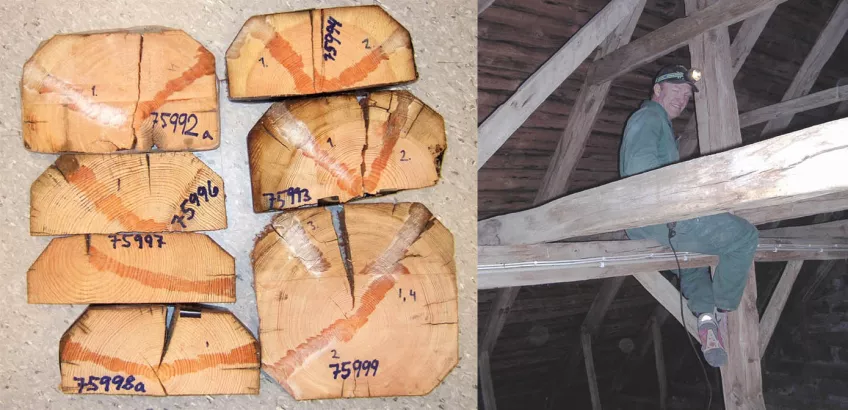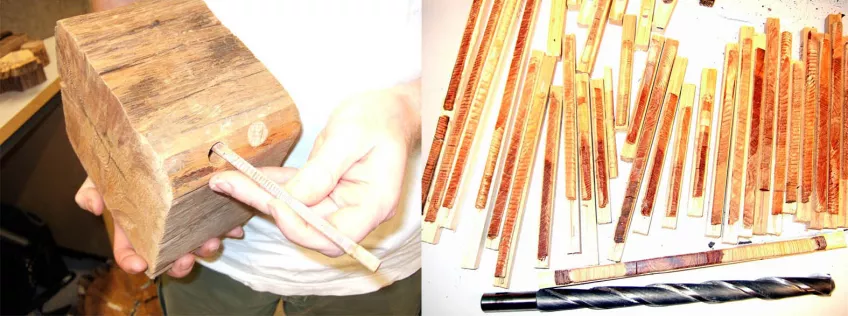Instructions for sample preparation
Cut out a disc of the wood where you think you can get the maximum number of growth rings and where there are no obvious disturbances by branches or other irregularities. If the log has suffered damage it may be useful to take several samples in order to cover more growth rings or the transition to bark. The disc should be at least 1-5 cm thick or thick enough not to break apart. Package the sample so that the wood retains its original moisture content or slightly drier, and so that no damage can occur during transportation to the laboratory. Enclose a description of the sampling circumstances, preferably with a photograph. If several samples are collected, each should be numbered consecutively. Materials that do not allow sampling can sometimes be analysed on site without damage. Please, contact the laboratory for more information
Contact
Hans Linderson
Department of Geology
Lunds University
Sölvegatan 12
SE-223 62 Lund
+46 46 222 7891
hans [dot] linderson [at] geol [dot] lu [dot] se



